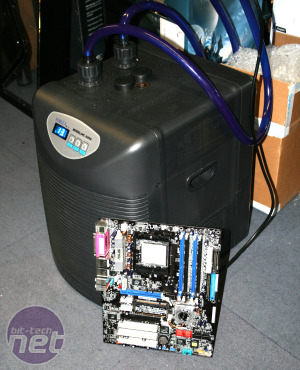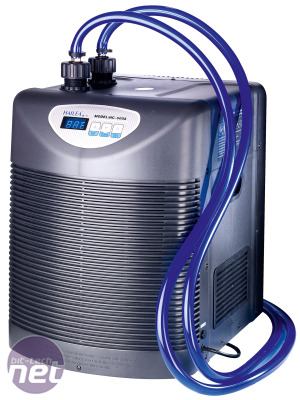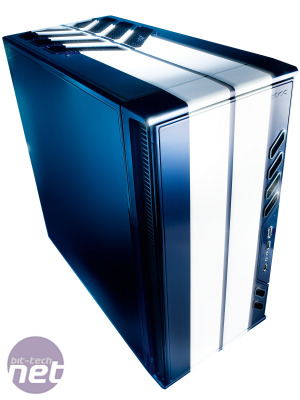Hailea HC-500A Water Chiller Review
Manufacturer: HaileaUK price (as reviewed): £399.89 (inc VAT)
US price (as reviewed): Unknown
As regular readers of the Hardware and CPC forums will probably have already spotted, we've been playing with a water chiller for a while, using it to reach some epic overclocks and set some new performance records.
We first got the water chiller, the Hailea HC-500A, in for an article in our sister mag Custom PC, using it to build Project Beast, a brutally fast PC with a 5GHz Core i7-980X Extreme Edition and an ATI Radeon HD 5970 graphics card inside a modded micro-ATX case. Given the many questions we were asked after the feature was published, we thought it was worth taking a closer look at the Hailea HC-500A in its own right.
Left and right: the Hailea HC-500A water chiller and mod Project Beast. Click to enlarge
Water chillers provide the next level of cooling capability above and beyond a standard water-cooling kit. Not that there's anything wrong with standard water cooling mind you - nearly half the bit-tech staff have built their own multi-waterblock loops. However, regardless what radiators and fans you choose, a standard water-cooling loop is incapable of cooling the coolant and components below room temperature.
This means that while a well designed standard water-cooling loop will provide far superior cooling than if you'd air-cooled the same PC. At a certain point when overclocking (a combination of voltage and frequency) your components will simply run too hot to be pushed any further.
What a water chiller does
In contrast, a water chiller is capable of reducing the temperature of the coolant passing through the loop below the ambient temperature of the room, thereby allowing you to overclock your system further.There are three ways
 of achieving sub-ambient water cooling. The first is to run a silly amount of power through a high-Wattage TEC (thermo-electric cooler) directly mounted on your CPU or GPU. However, TECs are hideously power inefficient and as TEC development has ground to a halt, there aren't any suitably sized TECs for modern processors.
of achieving sub-ambient water cooling. The first is to run a silly amount of power through a high-Wattage TEC (thermo-electric cooler) directly mounted on your CPU or GPU. However, TECs are hideously power inefficient and as TEC development has ground to a halt, there aren't any suitably sized TECs for modern processors.Alternatively, you could use a bank of lower-Wattage TECs to chill the coolant passing through a waterblock. This means that you then need to build a second water loop to cool the TECs. We last saw this approach in two of last year's Dream PCs, the Kobalt Daedalus and the Scan Jellyfish.
However, even these hideously expensive systems (which cost £7,500 or more) struggled to keep the CPU temperature under control, peaking at 79˚C and 86˚C respectively under load. What's more, both PCs were hideously power-inefficient, drawing more than 1.2kW under load and more than 640W even when idle. Finally, because this method requires two water cooling loops, you also need a monster case to house all the components.
You should therefore be pleased to hear that Hailea hasn't used TECs in its water chiller. Read on to find out how Hailea has cracked the sub-ambient cooling conundrum.

MSI MPG Velox 100R Chassis Review
October 14 2021 | 15:04











Want to comment? Please log in.